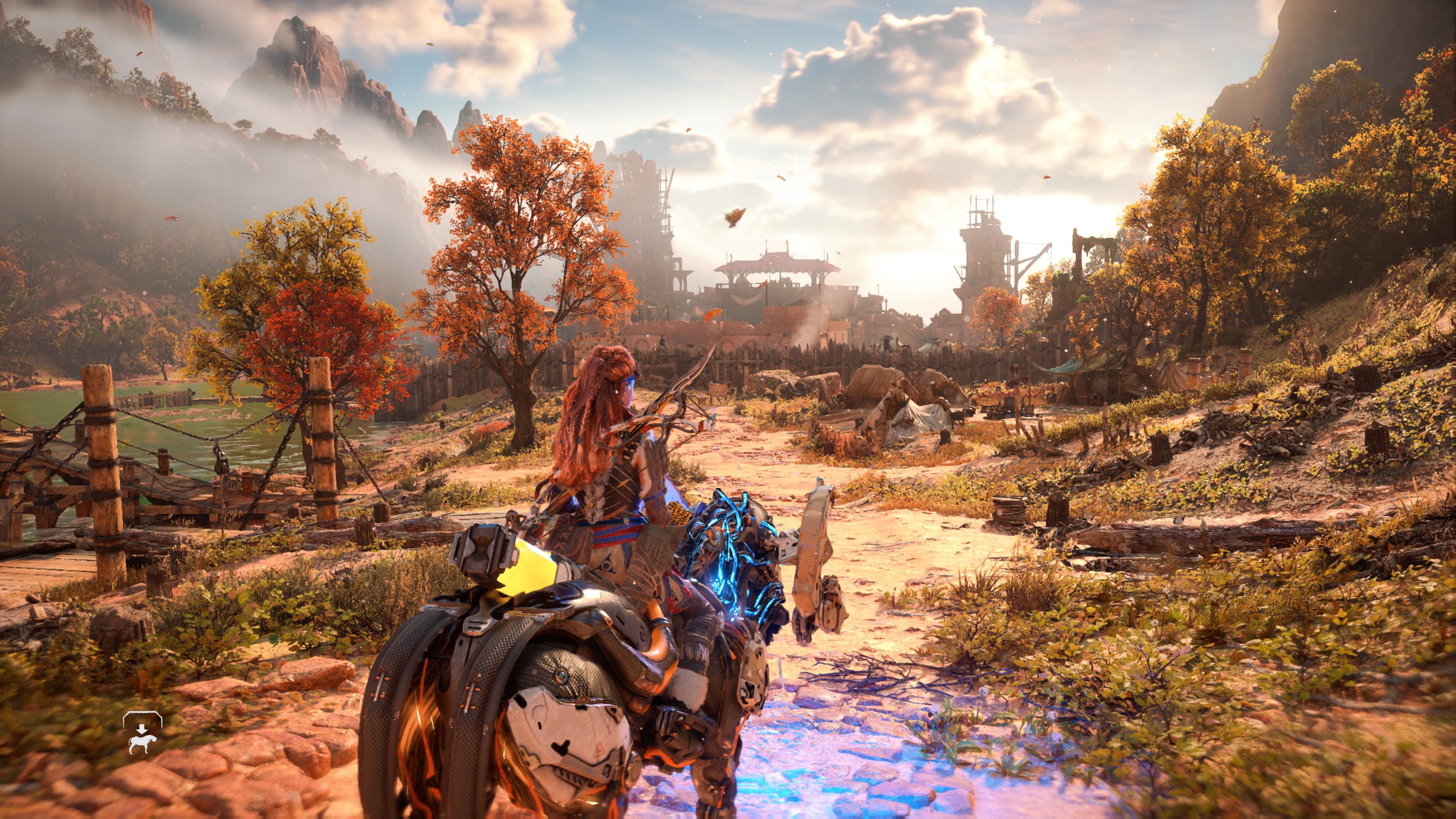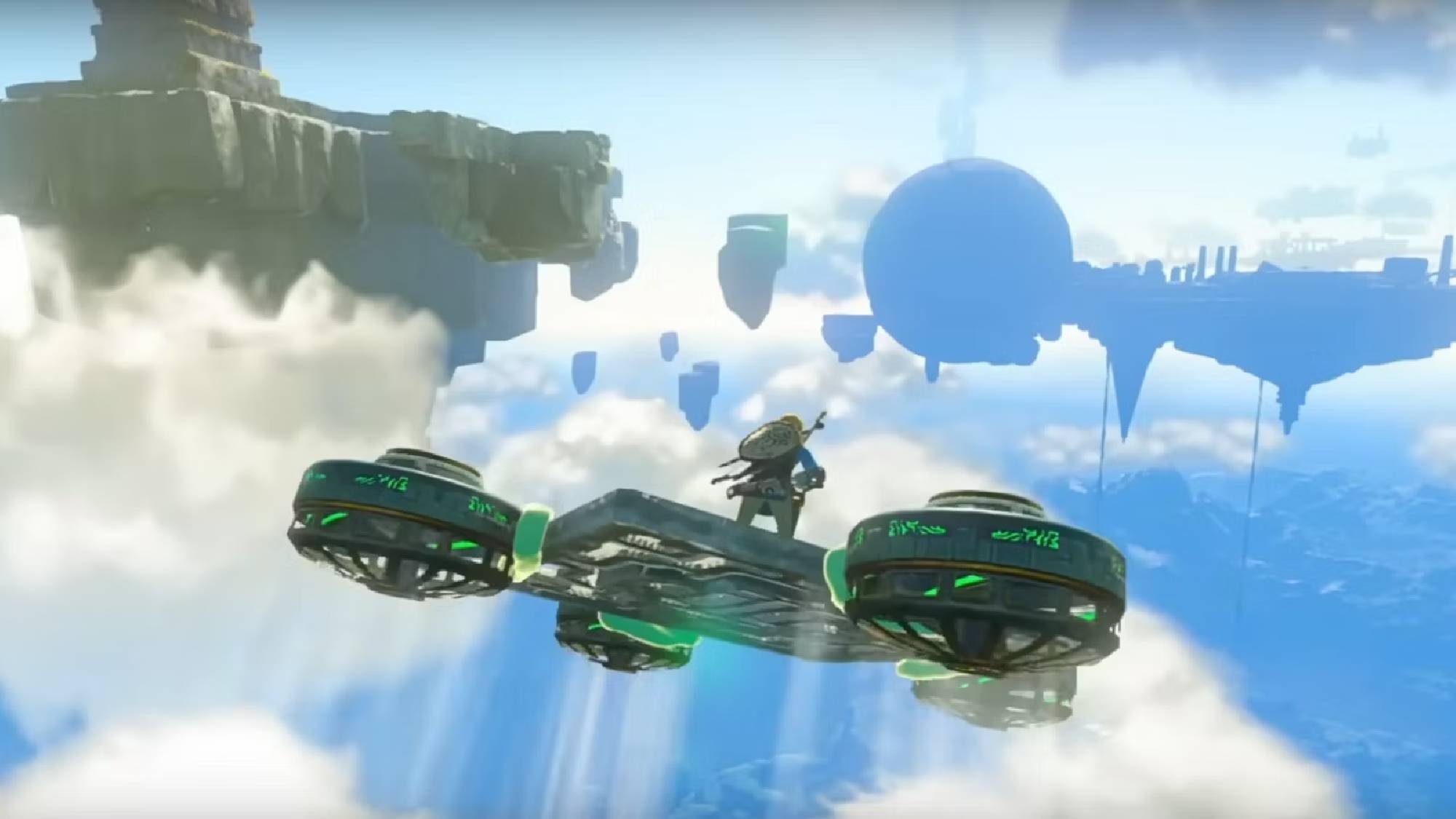New Zelda: Tears of the Kingdom gameplay looks amazing — but confirms my worst fear

Nintendo has been keeping its card frustratingly close to the chest when it comes to showcasing gameplay footage for The Legend of Zelda: Tears of the Kingdom, but at long last, we got a proper look at the upcoming Nintendo Switch game earlier today (March 28).
This sequel to Breath of the Wild is among the most anticipated games of the year, so naturally, the very second this 10-minute gameplay demonstration dropped on YouTube, I rushed over to consume it. And I came away pretty darn excited about the imminent release of Zelda: Tears of the Kingdom on May 12.
Some of the new gameplay mechanics showcased look phenomenal, and I seriously adore the clear focus on player creativity and freedom. However, this extended look at the Switch exclusive also confirms my biggest fear: The game appears to be seriously held back by the limitations of the Nintendo Switch hardware.
Zelda: Tears of the Kingdom needs a more powerful Switch

There was a great deal about this extensive look at Zelda: Tears of the Kingdom that impressed me, but if there was one aspect that really stood out for the wrong reasons it was the visuals. To be frank, Zelda: Tears of the Kingdom does not look like a 2023 release.
To be frank, Zelda: Tears of the Kingdom does not look like a 2023 release.
In fact, it looks pretty much identical to a certain game from 2017 called Zelda: Breath of the Wild. Obviously, it’s built on the same graphical engine as its predecessor and is clearly reusing many of the same visual assets. But, I was more than a little disappointed when the gameplay demo began — for a split second, I thought they were actually showing footage from Breath of the Wild at first.
The Nintendo Switch is an excellent device, but it’s seriously aged over the last six years and that is becoming more and more apparent as each new flagship game suffers from performance hiccups and blurry visuals. When I reviewed Splatoon 3 last summer, my chief complaint was its inconsistent graphic/framerate. And the same issue rendered its head when a colleague reviewed Bayonetta 3, a game that they felt "pushes the Switch to its limits."
As Zelda: Tears of the Kingdom is the latest mainline entry in one of Nintendo’s biggest franchises, I was hoping the development team might have somehow squeezed some extra performance from the Switch’s dated internal components. But after seeing the game in action that doesn't appear to be the case.
Get instant access to breaking news, the hottest reviews, great deals and helpful tips.
The game’s draw distance is noticeably meager — which will likely be a major problem when Link will be spending so much time hopping between floating islands in the sky — and the overall image resolution looks practically sub-720p in spots. Granted, the notoriously harsh YouTube video compression won’t be helping matters. But throughout the presentation, I kept wishing I was going to be playing Tears of the Kingdom on PS5, or on the long-rumored Nintendo Switch 2 console.

You could argue that Tears of the Kingdom is a sequel to Breath of the Wild released on the same hardware, so it would be unfair to expect a large graphical leap. But in response, I’d put forward the visual jump between Horizon Zero Dawn and Horizon Forbidden West on PS4 as a counterpoint. Heck, the first Horizon game was released just a single week before Breath of the Wild!
Now I never expected Zelda: Tears of the Kingdom to be a visual marvel that could compete with the most graphically-impressive titles on PS5 and Xbox Series X. However, I had hoped it could buck the trend of Switch exclusives with lackluster visuals and poor performance, and I'm pretty confident it won't now.
Zelda: Tears of the Kingdom could still be fantastic

It’s important to note that, broadly speaking, Switch games have rarely been graphical showcases. Instead, the best Nintendo Switch games tend to offer some of the most refined gameplay around, often coupled with very strong art direction. And Tears of the Kingdom looks to be doing just that.
Fuse will allow you to stick multiple items together to create super-weapons and could be ripe for experimentation. But it was the new Ultra Hand ability that really piqued my interest.
The gameplay presentation revealed a couple of new gameplay mechanics that have me very excited. Fuse will allow you to stick multiple items together to create super-weapons and could be ripe for experimentation. I’m already wondering about the possible combinations that will be offered in the full game. However, it was the new Ultra Hand ability that really piqued my interest.
The footage shows Link using his strange new metallic limb to build a crude raft and then sail it across a small lake. This seems like a fairly straightforward implementation, but a few later teases suggested that the possibilities are a lot bigger. I can’t wait to see what cobbled-together creations I’ll be able to construct in the final game — and I’m equally excited to see what the rest of the gaming community creates.
These mechanics are all about player freedom and expression, which would suggest that most quests and objectives can be tackled in a variety of ways. That’s will help to make each individual player feel like they’re on a unique adventure. Plus, it should lead to lightbulb moments where thinking outside the box will be the key to solving a particularly head-scratching puzzle or a seriously challenging enemy encounter.
Breath of the Wild did a marvelous job of making you feel like you were discovering things for yourself rather than being led by a quest marker as in games like Skyrim or Witcher 3, and it seems that Tears of the Kingdom is doubling down on this aspect. And that’s exactly what I wanted to see from this upcoming sequel.
Of course, the game’s narrative and more-focused dungeons remain a mystery, but based on what we’ve seen so far, Tears of the Kingdom could be another masterpiece in a franchise that already boasts several. I feel pretty confident that even the limitations of the Nintendo Switch hardware will be unable to spoil what should be a memorable gaming experience for all players. The wait until May 12 just got a lot harder.
More from Tom's Guide
- Don’t buy The Last Of Us Part 1 on PC yet — it’s a mess
- New Xbox Series X controller is truly unique — and fixes an annoying problem
- How to preorder Nintendo Switch OLED Zelda: Tears of the Kingdom Edition

Rory is a Senior Entertainment Editor at Tom’s Guide based in the UK. He covers a wide range of topics but with a particular focus on gaming and streaming. When he’s not reviewing the latest games, searching for hidden gems on Netflix, or writing hot takes on new gaming hardware, TV shows and movies, he can be found attending music festivals and getting far too emotionally invested in his favorite football team.
